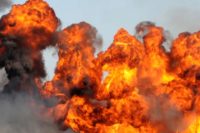A hiker was about a mile and a half up the Nualolo Trail in the Koke State Park in Hawaii, struggling with rain and fog and hampered by a visibility of about 20 feet, when he heard what sounded like the high-pitched whine of a helicopter in distress. Knowing that something was wrong, he tried to find the helicopter but couldn’t due to the adverse weather conditions and fading daylight.
That aircraft wasn’t located until the next day – December 27, 2019 – and it took the combined efforts of the US Coast Guard, the Kauai Fire Department, the Kauai Police Department, the Civil Air Patrol, the Hawaii Air National Guard and Safari Helicopters to find the accident site, which was nearly 3,000 feet above sea level in tropical mountainous terrain.
(Shown above: a typical tour route via Tree Tunnel to Upper Mic, as described by Safari Helicopters. The accident site is noted in the upper left portion of the figure. As the accident helicopter did not have flight tracking equipment onboard, the exact flight path is unavailable.)
The crash of the tourist helicopter, which was operated by Safari Aviation, killed the commercial pilot and all six passengers on board.
In a preliminary report on its investigation into the incident, the National Transportation Safety Board offered this timeline for the events surrounding the crash:
- About 1632, the pilot radioed Safari Helicopters' headquarters reporting a departure time of 1631. Shortly thereafter, another company pilot heard the accident pilot report his position at "Tree Tunnel," an air tour reporting point, on the common traffic advisory frequency.
- About 1645, an air tour pilot from a different company reported that he heard the accident pilot report "Upper Mic," which was a compulsory air tour reporting point that indicated the accident helicopter was exiting the Waimea Canyon and beginning a transition over to the Na Pali coastline via Koke'e State Park.
- About 1731, ten minutes after the accident helicopter was due to arrive back at PHLI, the flight follower for Safari Helicopters notified the company's director of operations that the helicopter was overdue, and flight-locating procedures began.
All of the helicopter's major components were located within the debris field, but the wreckage was largely consumed by a post-crash fire, which will make the NTSB’s investigation challenging. The initial report did not contain a determination of a probable cause; that will likely be issued sometime in the future.


